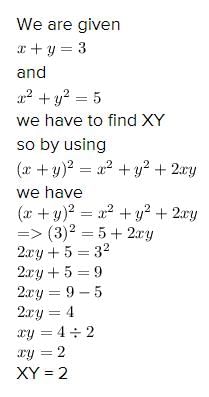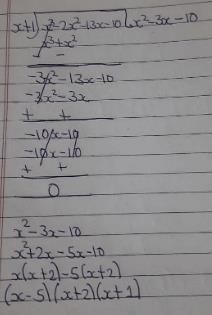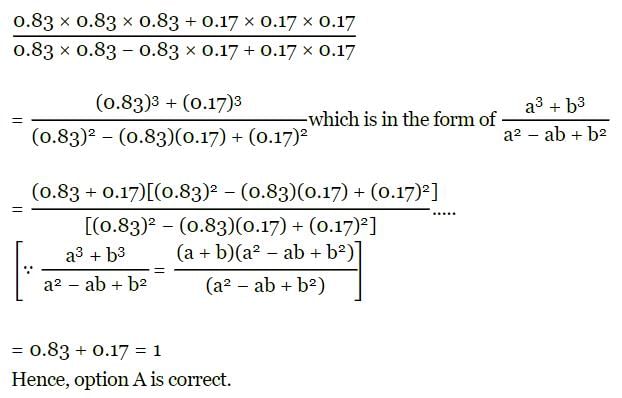Grade 9 Exam > Grade 9 Tests > Test: Polynomials - 1 - Grade 9 MCQ
Test: Polynomials - 1 - Grade 9 MCQ
Test Description
25 Questions MCQ Test - Test: Polynomials - 1
Test: Polynomials - 1 for Grade 9 2025 is part of Grade 9 preparation. The Test: Polynomials - 1 questions and answers have been prepared
according to the Grade 9 exam syllabus.The Test: Polynomials - 1 MCQs are made for Grade 9 2025 Exam.
Find important definitions, questions, notes, meanings, examples, exercises, MCQs and online tests for Test: Polynomials - 1 below.
Solutions of Test: Polynomials - 1 questions in English are available as part of our course for Grade 9 & Test: Polynomials - 1 solutions in
Hindi for Grade 9 course.
Download more important topics, notes, lectures and mock test series for Grade 9 Exam by signing up for free. Attempt Test: Polynomials - 1 | 25 questions in 25 minutes | Mock test for Grade 9 preparation | Free important questions MCQ to study for Grade 9 Exam | Download free PDF with solutions
Detailed Solution for Test: Polynomials - 1 - Question 1
Detailed Solution for Test: Polynomials - 1 - Question 2
Test: Polynomials - 1 - Question 3
The coefficient of x3 in the polynomial 5 + 2x + 3x2 – 7x3 is
Detailed Solution for Test: Polynomials - 1 - Question 3
Test: Polynomials - 1 - Question 4
The quadratic polynomial whose sum of zeroes is 3 and the product of zeroes is –2 is :
Detailed Solution for Test: Polynomials - 1 - Question 4
Detailed Solution for Test: Polynomials - 1 - Question 5
Detailed Solution for Test: Polynomials - 1 - Question 6
Test: Polynomials - 1 - Question 7
When the polynomial x3 + 3x2 + 3x + 1 is divided by x + 1, the remainder is :-
Detailed Solution for Test: Polynomials - 1 - Question 7
Test: Polynomials - 1 - Question 8
If the polynomial 2x3 – 3x2 + 2x – 4 is divided by x – 2, then the remainder is :-
Detailed Solution for Test: Polynomials - 1 - Question 8
Test: Polynomials - 1 - Question 9
The value of k for which x – 1 is a factor of the polynomial 4x3+ 3x2 – 4x + k is :-
Detailed Solution for Test: Polynomials - 1 - Question 9
Test: Polynomials - 1 - Question 10
The value of k for which x + 1 is a factor of the polynomial x3 + x2 + x + k is :-
Detailed Solution for Test: Polynomials - 1 - Question 10
Test: Polynomials - 1 - Question 11
The value of m for which x – 2 is a factor of the polynomial x4 – x3 + 2x2 – mx + 4 is :-
Detailed Solution for Test: Polynomials - 1 - Question 11
Detailed Solution for Test: Polynomials - 1 - Question 12
Detailed Solution for Test: Polynomials - 1 - Question 13
Detailed Solution for Test: Polynomials - 1 - Question 14
Detailed Solution for Test: Polynomials - 1 - Question 15
Detailed Solution for Test: Polynomials - 1 - Question 16
Detailed Solution for Test: Polynomials - 1 - Question 17
Detailed Solution for Test: Polynomials - 1 - Question 18
Detailed Solution for Test: Polynomials - 1 - Question 19
Detailed Solution for Test: Polynomials - 1 - Question 20
Detailed Solution for Test: Polynomials - 1 - Question 21
Test: Polynomials - 1 - Question 22
The degree of the polynomial 4x4+0x3+0x5+5x+74x4+0x3+0x5+5x+7 is
Detailed Solution for Test: Polynomials - 1 - Question 22
Detailed Solution for Test: Polynomials - 1 - Question 23
Detailed Solution for Test: Polynomials - 1 - Question 24
Detailed Solution for Test: Polynomials - 1 - Question 25
Information about Test: Polynomials - 1 Page
In this test you can find the Exam questions for Test: Polynomials - 1 solved & explained in the simplest way possible.
Besides giving Questions and answers for Test: Polynomials - 1, EduRev gives you an ample number of Online tests for practice
Download as PDF


 , where a, b, c, d, e, and f are real numbers and a ≠ 0.
, where a, b, c, d, e, and f are real numbers and a ≠ 0. .
. 














